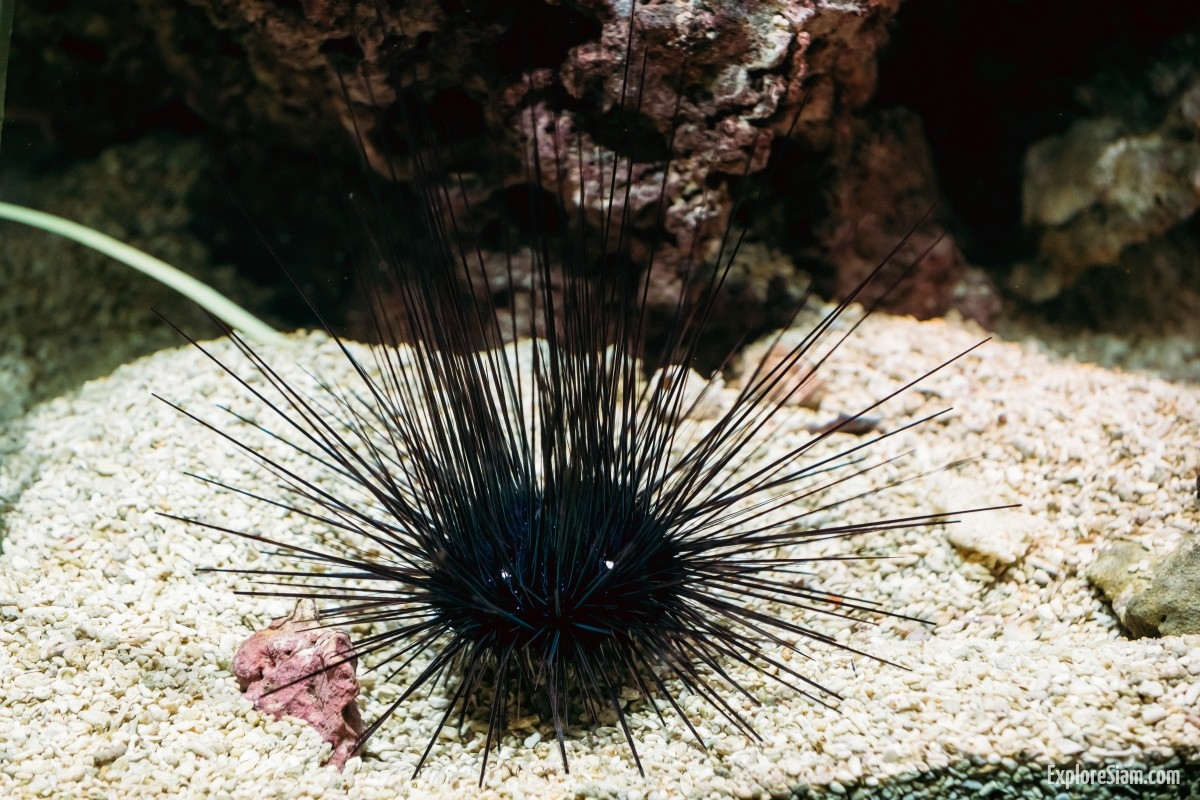Sea urchins are intriguing and complex marine creatures that belong to the echinoderm family, which also includes starfish and sand dollars. With their spherical shape and spiny exterior, they are a distinctive feature of the ocean floor, particularly in tropical and subtropical regions. These creatures are essential to the health of marine ecosystems, especially coral reefs, where they help control algae growth. However, despite their ecological importance, sea urchins can pose a serious risk to humans due to their sharp and sometimes venomous spines.
The Danger of Sea Urchins
The primary danger posed by sea urchins comes from their spines. These spines are not only sharp but also fragile, which means they can easily break off and become embedded in the skin. The spines can cause immediate pain and discomfort, and their removal can be difficult. Some species of sea urchins also possess venomous spines or pedicellariae—tiny pincer-like structures that can inject toxins. These toxins can cause a range of symptoms from localized pain and swelling to more severe reactions such as muscle paralysis or respiratory issues. While life-threatening reactions are rare, the pain and potential for infection make it crucial to handle sea urchin injuries promptly and correctly.
First Aid for Sea Urchin Injuries
Prompt and effective first aid is essential when dealing with sea urchin injuries to prevent complications. Here are the steps to follow:
- Remove Spines: Use tweezers to carefully extract any visible spines. If spines are deeply embedded, you might need to seek medical assistance. Avoid using needles as this can push the spines deeper.
- Soak the Affected Area: Immerse the injured area in hot water (as hot as can be tolerated) for 30 to 90 minutes. The heat helps to alleviate pain and neutralize any toxins. You can repeat this several times a day.
- Apply Vinegar: Soaking the wound in vinegar or applying vinegar-soaked cloths can help to dissolve any remaining spine fragments, making them easier to remove.
- Clean the Wound: After soaking, thoroughly clean the wound with soap and fresh water to reduce the risk of infection. Antibacterial ointments can also be applied.
- Monitor for Infection: Keep an eye on the wound for signs of infection, such as increased redness, swelling, or pus. If these symptoms occur, seek medical attention promptly.
Wearing Aqua Shoes
One of the simplest and most effective measures to prevent sea urchin injuries is wearing aqua shoes. These protective shoes are designed to shield your feet from sharp objects while walking on the beach or swimming in the ocean. Aqua shoes are made from durable, flexible materials that allow for comfortable movement in and out of the water. By providing a barrier between your feet and potential hazards like sea urchins, they significantly reduce the risk of injury. They are particularly useful in rocky or coral-rich areas where sea urchins are likely to be found.
Avoid Touching Reefs and Rocks
To minimize the risk of encountering sea urchins, it’s important to avoid touching reefs and rocks while swimming, snorkeling, or diving. Sea urchins often hide in crevices, under rocks, and among corals. By refraining from touching these surfaces, you decrease the likelihood of contact with sea urchins. This not only helps protect you but also preserves the delicate marine environment. Responsible snorkeling and diving practices, such as keeping a safe distance from the seabed and being mindful of where you place your hands and feet, are essential for both safety and conservation.
Avoid Swimming in the Dark
Swimming in the dark can increase the risk of accidents, including encounters with sea urchins. Limited visibility makes it difficult to see where you’re stepping or what you’re touching, heightening the chance of injury. To avoid trouble, it’s best to swim in well-lit areas during daylight hours. If you must swim at night, use waterproof flashlights or other lighting to illuminate your path. This will help you avoid stepping on or brushing against sea urchins and other marine life that could pose a risk.
General Information about Sea Urchins
Sea urchins are fascinating creatures with a unique biology. They have a hard, round shell called a test, which is covered in long, movable spines that can range in color from black and brown to vibrant shades of red, purple, and green. These spines serve both as a means of locomotion and defense against predators. Sea urchins use a specialized structure called Aristotle’s lantern to feed on algae and other organic material, playing a crucial role in controlling algae growth on coral reefs.
Sea urchins move slowly using hundreds of tiny tube feet located on the underside of their bodies. These tube feet, equipped with suction pads, allow them to adhere to surfaces and maneuver across the ocean floor. Despite their slow movement, sea urchins are well-adapted to their environment and have been thriving in the world’s oceans for millions of years.
Understanding the habits and habitats of sea urchins can help reduce the risk of injury. These creatures are typically found in shallow coastal waters, often hiding in rocky crevices, among seaweed, or within coral reefs. By being aware of their presence and taking appropriate precautions, such as wearing aqua shoes and avoiding contact with underwater surfaces, you can enjoy a safer and more enjoyable experience in the ocean.
Sea urchins are an essential part of the marine ecosystem, contributing to the health and balance of coral reefs. However, their sharp spines can pose a significant threat to humans. By understanding the dangers they present and taking appropriate precautions, you can avoid trouble with sea urchins. Wearing protective footwear, refraining from touching reefs and rocks, avoiding swimming in the dark, and knowing how to administer first aid in case of an encounter are all crucial steps to ensure your safety. Respecting the marine environment and its inhabitants not only protects you but also preserves the natural beauty and ecological balance of our oceans, allowing for a safer and more enjoyable experience for everyone.





